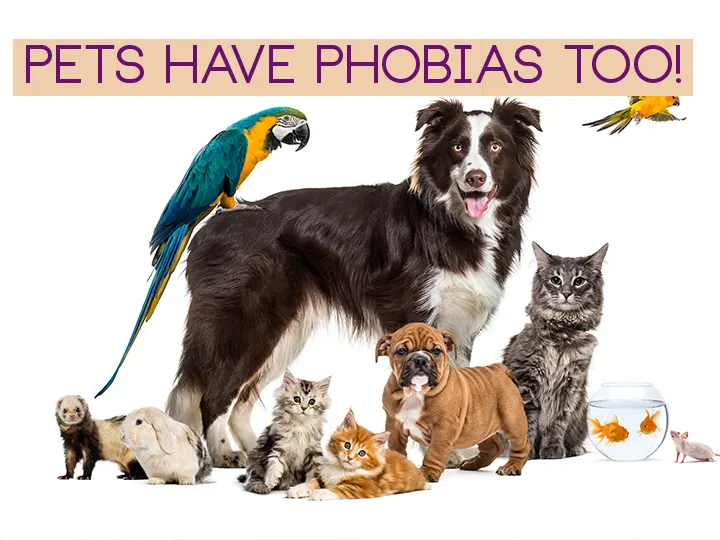
Pets have phobias too!
Did you know that pets that have just as much emotions as humans can have phobias? Here are the things that our dear friends fear the most...
No one wants their only pet friend to feel bad, but sometimes it can be unavoidable. It can be upsetting for you if they feel scared or look worried because you want your pet to be happy, but knowing the warning signs that your friend is being triggered by something is important to solving this problem.
How to understand that animals are afraid?
Pets can display their feelings of fear in a variety of ways. The most common symptoms include a crouching posture, trembling, an arched back, and ears pressed back. While there are some obvious anxiety triggers for pets, such as thunderstorms and fireworks, other triggers may be less obvious. In fact, some of the things that can frighten your furry friend are the objects they encounter in their daily life, or even the unknowing behavior of you and your loved ones. Here are some of them…
1- Changes in routine
Even though pets may seem well established in your home, they are still sensitive to changes in the home, even minor changes. A crowded reception table, hosting a guest, going on vacation, or any change in routine can cause your pet to gain stress, which can lead to negative behavioral changes. To minimize this, she recommends making sure your furry friend has a place of seclusion or a room where he'll feel comfortable to unwind. These changes in routine should be gradual if possible.
2- Carrying household goods
Maybe you get bored with the layout of your living room or bedroom, so you move a sofa or a table there, or maybe you buy new furniture to meet your needs. While it may not be bothersome to you, it can be scary for your pet. Every time items such as furniture are moved, it can be stressful for pets, so you should acclimate them if possible over time to allow them to adapt. You can try gradually introducing moving or noisy items such as fans or kitchen appliances.
3- Noisy instruments
Even the human ear doesn't like the sound of a mixer or a working vacuum cleaner, so you can already guess that these loud noises can also annoy animals. Your house may be filled with seemingly benign everyday objects that may cause fear in our pets, and these loud noises may alarm your pet. Also, appliances such as vacuum cleaners can smell strange to pets, which can cause fear.
4- Insects
Like people, pets can experience insect phobias. The buzzing sound of flies and bees can frighten pets, causing them to jump or bite their bodies. If your furry friend has had an insect trauma in the past, such as being bitten by a fly or stung by a bee or wasp, they may be particularly frightened when they encounter insects.
5- Loud sounds
This may come as a surprise if you think your pet loves to greet you excitedly, but these sudden and loud exclamations can actually scare them away. While all animals are different when it comes to their triggers, some dislike a loud shout or even an angry tone of voice. Supporting your favorite sports team during a match or cheerfully welcoming a guest into your home can be scary at times.
6- Unknown objects
Pets may be suspicious of certain objects, which can lead to fear and anxiety. For example, some cats jump into the air and run away when they see a cucumber (and other unusually stationary objects). The seemingly exaggerated response is likely due to the sudden appearance of an unusual object in their environment. Cucumbers are not a common object for cats; therefore, his sudden appearance in a familiar area may frighten them.
7- Children
While it is not unusual for pets to be afraid of strangers, they can also show signs of stress and anxiety in the presence of children. Although this fear depends on the personality type of the animal, children can frighten pets because they often display timid behavior when approaching an animal. This fear or worry can be read as aggression to you. Teaching children how to safely approach a pet is important to avoid potentially dangerous interactions.